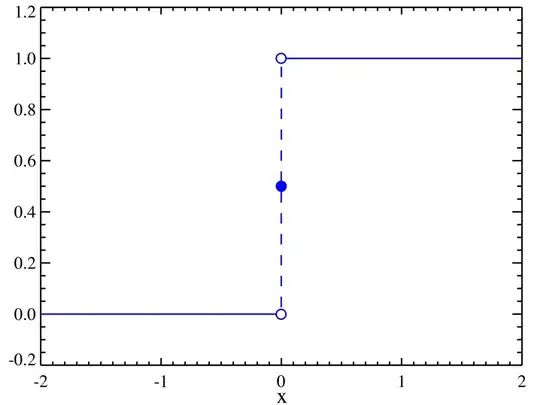I perfectly understand the definition of a limit which states that:
Given $$ ε > 0 $$, there is some $$δ(ε) > 0 $$ such that $$0 < |x − a| < δ ⇒ |f(x) − b| < ε$$
but why don't we care about when x=a?
I perfectly understand the definition of a limit which states that:
Given $$ ε > 0 $$, there is some $$δ(ε) > 0 $$ such that $$0 < |x − a| < δ ⇒ |f(x) − b| < ε$$
but why don't we care about when x=a?
Given a function $f\colon \mathbb R\to\mathbb R$ and a real number $x\in\mathbb R$, we can consider the value of the function at $x$, we can consider the left hand limit of the function as we approach $x$ from below, and we can consider the right hand limit as we approach from above.
For a continuous function, all these three numbers (exist and) are equal. But in general, they can all be different, here is an explicit example: This is a picture of a discontinuous step function. The left hand limit at $x=0$, also denoted $f(0^-)$, is equal to $0$. The value at $0$, denoted $f(0)$, is equal to $\tfrac12$. And the right hand limit, denoted $f(0^+)$, is equal to $1$.
This is a picture of a discontinuous step function. The left hand limit at $x=0$, also denoted $f(0^-)$, is equal to $0$. The value at $0$, denoted $f(0)$, is equal to $\tfrac12$. And the right hand limit, denoted $f(0^+)$, is equal to $1$.
In your definition, the "limit" is actually describing the values of the left and right hand limits, if they are equal - and the limit does not exist, if they are not.